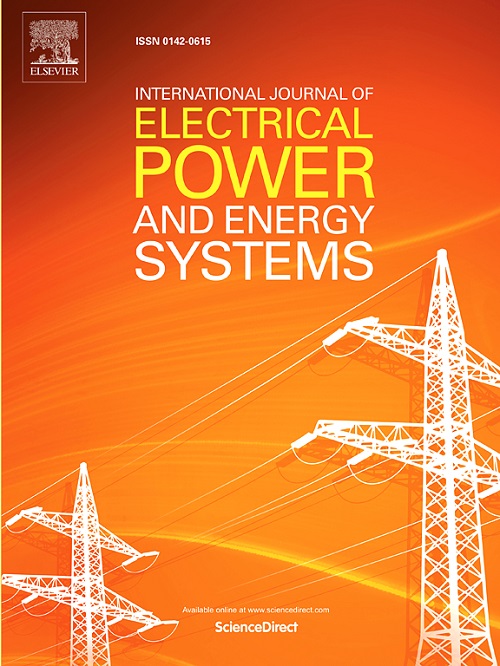Demand-side shared energy storage pricing strategy based on stackelberg-Nash game
IF 5
2区 工程技术
Q1 ENGINEERING, ELECTRICAL & ELECTRONIC
International Journal of Electrical Power & Energy Systems
Pub Date : 2024-11-21
DOI:10.1016/j.ijepes.2024.110387
引用次数: 0
Abstract
With the large-scale access of user-side energy storage devices, shared energy storage has emerged as a key mode of energy storage in distribution networks. This mode requires efficient management of energy storage devices that balances the interests of different entities such as power supply enterprises, shared energy storage operators, and prosumers. In this mode, the formulation of charging and discharging prices is crucial. This paper proposed a dual-layer pricing model for shared energy storage systems based on mixed-game theory and its solution method. First, this study developed an upper-level stackelberg game model between the power supply enterprise and the cooperative alliance. The power supply enterprise, acting as the leader, sought to minimize operational costs while negotiating transaction electricity prices with the cooperative alliance. Second, a cooperative game model was developed within the lower-level alliance. As followers, the cooperative alliance seeks to maximize the alliance’s overall benefits. Based on the upper-level transaction electricity price and Nash bargaining theory, the internal transaction electricity price within the alliance was determined through negotiation. Subsequently, charging and discharging strategies were formulated along with a profit distribution mechanism. Finally, case studies simulations were used to validate the feasibility and effectiveness of the proposed model.
基于 stackelberg-Nash 博弈的需求方共享储能定价策略
随着用户侧储能设备的大规模接入,共享储能已成为配电网中的一种重要储能模式。这种模式要求对储能设备进行有效管理,平衡供电企业、共享储能运营商和用户等不同主体的利益。在这种模式下,充放电价格的制定至关重要。本文基于混合博弈理论提出了共享储能系统的双层定价模型及其求解方法。首先,本研究建立了供电企业与合作联盟之间的上层堆栈博弈模型。供电企业作为领导者,在与合作联盟协商交易电价的同时,寻求运营成本最小化。其次,在下级联盟内部建立了合作博弈模型。作为追随者,合作联盟寻求联盟整体利益的最大化。根据上层交易电价和纳什讨价还价理论,通过谈判确定联盟内部的交易电价。随后,制定了充放电策略和利润分配机制。最后,利用案例研究模拟验证了所提模型的可行性和有效性。
本文章由计算机程序翻译,如有差异,请以英文原文为准。
求助全文
约1分钟内获得全文
求助全文
来源期刊
CiteScore
12.10
自引率
17.30%
发文量
1022
审稿时长
51 days
期刊介绍:
The journal covers theoretical developments in electrical power and energy systems and their applications. The coverage embraces: generation and network planning; reliability; long and short term operation; expert systems; neural networks; object oriented systems; system control centres; database and information systems; stock and parameter estimation; system security and adequacy; network theory, modelling and computation; small and large system dynamics; dynamic model identification; on-line control including load and switching control; protection; distribution systems; energy economics; impact of non-conventional systems; and man-machine interfaces.
As well as original research papers, the journal publishes short contributions, book reviews and conference reports. All papers are peer-reviewed by at least two referees.

 求助内容:
求助内容: 应助结果提醒方式:
应助结果提醒方式:


